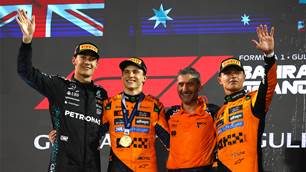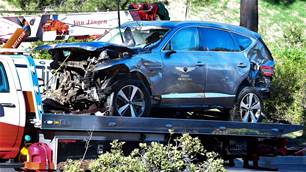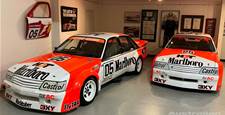If Elite Motor Racing Drivers aren’t athletes, why don’t we ever see any podgy ones?
 Main Image by Getty Images, Others Courtesy of Reebok
Main Image by Getty Images, Others Courtesy of Reebok
If Elite Motor Racing Drivers aren’t athletes, why don’t we ever see any podgy ones?
IF ELITE MOTOR RACING DRIVERS aren’t athletes, why don’t we ever see any podgy ones? Further, if Formula One isn’t a “real” sport, why does one of its biggest superstars, Lewis Hamilton, have to put himself through up to five hours of torturous cardio and resistance training each day? (After all, success depends on how fast the car is, right?) So goes the argument of the ignorant F1 outsider. But as we saw in last month’s Australian F1 GP in Melbourne through Mark Webber’s and Daniel Ricciardo’s violently shaking helmet cams, piloting one of these screaming road jets is as rough on the body as being hit by a front row forward. McLaren’s Hamilton (2008 world champion) and his globe-trotting, starlet-dating fellow superstars of the wheel know that going into an F1 season even the slightest bit physically underdone means not only slow lap times, but the certainty of G-force-created whiplash and serious neck, torso and leg trauma. If, after taking in Hamilton’s off-track training regime, which he outlined to Inside Sport at a Reebok promo event in Sydney ahead of the Oz GP, you’re still unconvinced that F1 is a sport contested by athletes and not mere steering wheel holders, you’re a hard sports fan to please.
SCOUT’S MOTTO
“I’ve never gone into a season underprepared. That’s why I have a trainer. You have to be in it to win it. You can’t do it half-arsed. You have to do it properly. I’ve worked with people from all different racing disciplines, whether it be go-karting, etc ... The other day I did a media event and took people around in a GT car and they couldn’t believe how hard it was to keep their heads up and control themselves when I was driving. I was completely in control but they were all over the place.”
GETTING PHYSICAL
“You wouldn’t believe how physical the sport of Formula One is; no one believes it. It’s massively mentally demanding, too. During our pre-season, we’ll train between four and five hours a day. Our regime involves a lot of core stability work. We don’t have to be bulky or muscley, but we do have to keep our weight low while maintaining strong endurance muscles. So that means a lot of repetitions, some cycling, hiking, cross-country skiing and running. We might run for an hour and 40 minutes a day. We do long, long runs. Sometimes our runs are at a fast pace, sometimes they’re slow. Our aim is to peak physically before the first race of the season.”
Related Articles

Gallery: 2025 Bahrain Grand Prix

Gallery: 2025 Chinese Grand Prix













